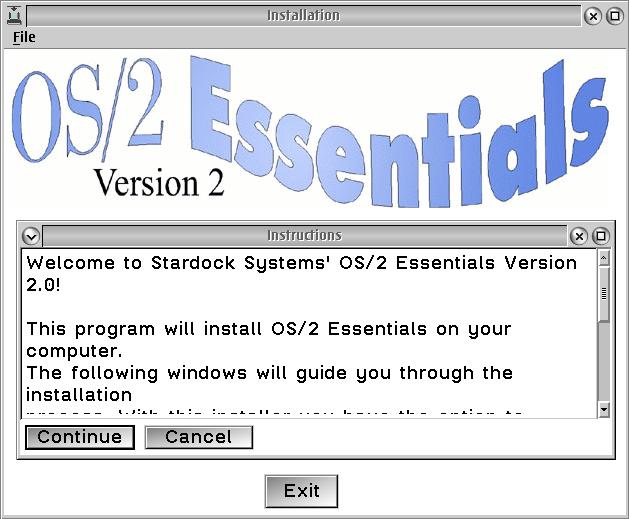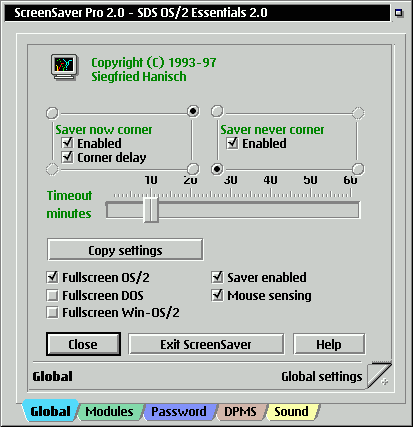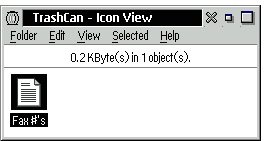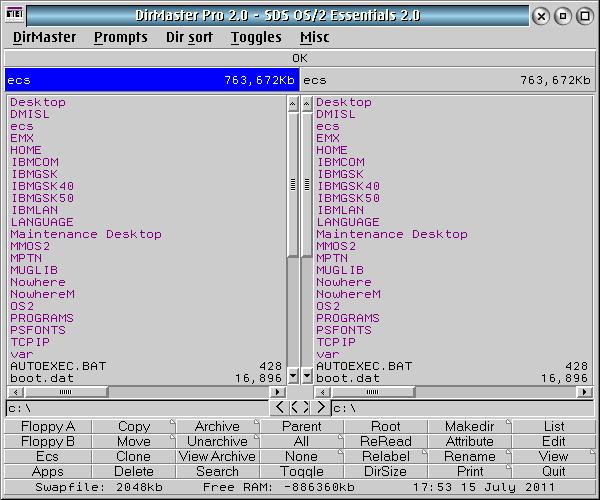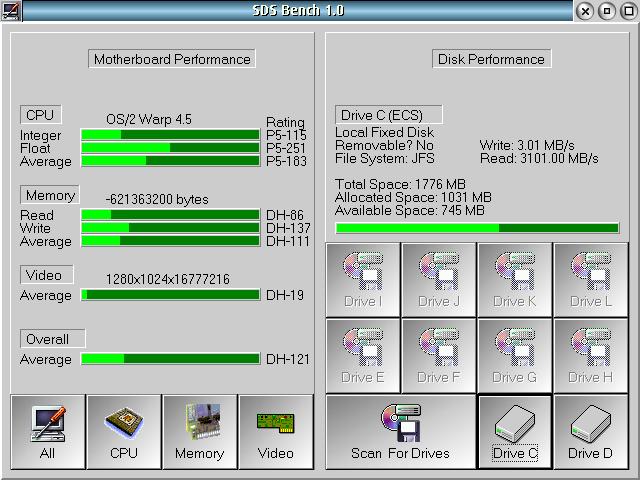OS/2 Essentials Version 2.0 Review
|
|
- Download OS/2 Essentials Version 2.0
- This download is the original CD content, I have done this to keep the purity of the OS/2 Essentials CD. You can delete most of the files you don't want since most of the data is patches and demos. The programs themselves are actually quite small.
- File Size: 386MB (full version, no key needed)
- Download OS/2 Essentials Version 2.0
- This download is only the programs themselves, weighing in at only 2.65MB. Some folders will have broken links because of this though.
Introduction:
From the Old Stardock website:
“OS/2 Essentials was designed to supply what Stardock considered basic features that OS/2 left out. OS/2 Essentials 1.0 came with a file manager, a screen saver, a directory space grapher, a window manager, and an arcade game. Since then, it has been able to observe which market segments were using it and which ones were not.
Version 2.0 of OS/2 Essentials, scheduled for release in early June of 1997 drops the arcade game and window manager and adds a real benchmarking program. Being able to gauge the relative speed of a system's CPU, video, hard disk, and memory has been one of the most requested features for OS/2 Essentials for some time. Both end users and administrators looking to see how their system is performing in a quick and easy fashion will have use for this feature.
DirMaster has been updated to improve its performance and the WPS Trashcan has been updated to allow it to more fully integrate itself into OS/2 making it behave as a true trashcan. The screen saver has been updated with new modules and new features as well. One reason why it is so attractive to corporate users is due to its security features. It is not commonly known but OS/2's Lockup feature has a serious bug in that when it activates, it resets the priorities on all threads running on the system. While this isn't very noticeable on many systems, a system that is running programs that run at "idle" priority (such as system monitoring tools, network messaging, etc.) are suddenly reset to "normal" priority which can cause performance loss and instability in some systems. The screen saver not only does not have those problems but offers far superior security to the basic Lock up feature.
Another plus of OS/2 Essentials 2.0 is that it comes on CD. Stardock decided to use the extra space to distribute IBM's Fixpack 1 for OS/2 Warp 4 and the latest FixPack for OS/2 Warp 3. Other "goodies" on the CD include Adobe's Acrobat Reader, Java updates, and numerous other programs, utilities, and files that are on the Internet.”
--- As you can tell, OS/2 Essentials was made in the day of OS/2 Warp 4, when there were indeed things missing. There were no screen savers built into Warp 4, no the Trash Can, and other things you would assume would be a standard item. Today, there is no need for those “Essentials” unless you are still running Warp 4 (or lower) in a Virtualbox, if you are though, then it's certainly something to look at.
Today though, with eCS 2.1, does OS/2 Essentials still have a place?
Installation:
The installation process is standard for Stardock products of the time. The IBM Installer is used, and while it is not WarpIn, I find there is nothing inherently bad using it as an end user.
There are six choices here for install (5 really the Screen Saver options are just language choices: English and German), but since eCS 2.1 comes with a Screen Saver and Trashcan, I only installed three items: SDS Bench, DirMaster Pro, and FileGraph/PM Pro.
I picked a location to install the files (C:\programs\sdsoe2 and my install took something like 10 seconds.
Startup:
Once the install is done, a new folder is placed on your desktop with the programs you selected and folders of the additional demos, 3rd party Programs, and Service Packs.
After you get over the nostalgia of days gone by from the demos, 3rd party Programs, and Service Packs, you can all but delete them. Most, if not all the programs there are outdated.
One thing, there is also a folder on the CD that is called HTML, click on the index.html icon and you will be able to look at what is on the CD via a HTML format we all know and love.
Anyways, what we are here for are the applications. Let's see what we have here.
The Program:
When I decided to do this review of OS/2 Essentials v2, I thought it interesting the word “essentials” since that word is so temporary, this is because, save one program and some wallpapers on this CD, it's pretty much crap. But this is because I am looking at this collection of OS/2 apps today. Back in 1997, I was excited to pay the $49.95 (yes, that much), to get my hands on this CD, why? Well, first off, remember what connection speeds we had back then. If I remember correctly, I had a 33.6 baud modem.
Stardock decided to work with several programmers and their apps and put them together, at the time, this made sense since all of the individual programs were struggling to make money, this gave them all the opportunity to make a profit. If the CD was bough, even if the customer did not want the CD for their program, they got a cut. The OS/2 Essentials v2 had 386MB of goodies that were on one CD and made it easy to use and update fast.
I was using Warp 4 back in 1997 and it was missing “Essential” programs like the Screen Saver, which back then, was more important then as all of us were using CRT monitors which could “burn” in images if we did not have a Screen Saver on. The Trashcan was nice since the only thing we had was the “shredder”.
So lets look at all of the programs, as I said before I installed only three of the six choices, tho, there really are only 5 since the Screen Saver programs is counted twice but just because it has the choices of English or German.
One note though: To have a fully review though, I dug into the past and found that there was a review for OS/2 Essentials v2 from November 16, 1997 from OS/2 eZine! A long dead OS/2 magazine but still very helpful.
I did not actually install Screen Saver Pro or the Trashcan because I have eCS 2.1, which has both built in. So for the sake of having a “full” review, I am “borrowing' a review from OS2 eZine by Christopher B. Wright on both of those, the other apps will be done by me. Since the magazine last came out in December 16, 2004, and that review was done November 16, 1997, I don't “think” I will be sued:
Screen Saver Pro:
OS2 eZine' review by Christopher B. Wright (November 16, 1997):
“If you're tired of OS/2's lockup function and have been longing for real screen savers similar in form and scope to AfterDark, you're not alone. At first I was a bit surprised by Stardock's decision to include a screen saver program, considering their decision to take out the arcade game from the previous version. Aren't screen savers just a bunch of fluff, after all? Most monitors nowadays don't suffer from "burn in", at least not as severely as they used to, so screen savers have become somewhat ornamental.
Apparently, this is not entirely the case. First of all, screen savers are useful in securing your machine while you are away from them. This is essentially what the lockup feature that comes with OS/2 does, but according to Stardock's website, this feature has a slight problem:
“It is not commonly known but OS/2's Lockup feature has a serious bug in that when it activates, it resets the priorities on all threads running on the system. While this isn't very noticeable on many systems, a system that is running programs that run at "idle" priority (such as system monitoring tools, network messaging, etc.) are suddenly reset to "normal" priority which can cause performance loss and instability in some systems.”
Screen Saver Pro not only eliminates this problem, it also provides better security features than the standard lockup feature does.
The best part of this program, however, is that it has some very nice looking screen savers especially the 3d ones that use OpenGL. I have not tested the OpenGL screen savers with the OpenGL 1.1 update (mainly because I can't figure out how to install the update), but they work fine with version 1.0.
Screen Saver Pro comes in an English and German version. It also comes with an option to install Dos support - so your dos and windows sessions can use this feature as well.
I have noticed a potential problem with the program, however. Occasionally my Startup folder will not be able to start everything, and SSPro seems to be the culprit. When I remove SSPro from the Startup folder, everything will load normally. This is an intermittent problem and I'm not certain if SSPro really is at fault or if it's another application.
WPS TrashCan:
OS2 eZine' review by Christopher B. Wright (November 16, 1997):
“My favorite of all the items in this suite, WPS TrashCan gives your OS/2 Workplace Shell desktop a TrashCan object just like the ones found on a Macintosh (or on that 16-bit video game they sell in Seattle). You just drag what you want to delete into the TrashCan object, and if you change your mind you drag it back out again. Right-clicking on the object will give you an option to empty it, which summarily dispatches the offending files.
The TrashCan functions as any other WPS object. You can copy it and shadow it at your leisure. Its settings notebook comes with a few other functions that make sure you remember to empty it from time to time - for example, you can give it a maximum storage capacity, forcing you to empty the TrashCan when the limit is exceeded, and you can force it to purge itself after certain periods of time.
My only complaint with the application is that it doesn't install with other programs from the main install program. Instead, the main installation program installs another installation program, which will in turn install the WPS TrashCan. There may be valid technical reasons for doing this, but it seems needlessly redundant.
The WPS TrashCan is a great application, and one that is sadly lacking in OS/2. In fact, I'd like to see Stardock provide more tools that emulate other aspects of the Mac environment in the future (for example, it would be neat if Stardock created a folder object that automatically opened when a file was placed on top of it, a la OS8).”
DirMaster Pro 2.0:
DirMaster Pro 2.0 is a file manager that is “supposed” to speed how you do work because you can move files around, delete, etc. In reality though, I find it a limited use application, especially if you have Object Desktop. Oddly, the version that comes on the OS/2 Essentials CD is older than what was currently out at the time (version 2.22), which, today is mute since there is a newer version that came out in 2002 (version 2.31).
DirMaster is a full-featured file and directory manager for OS/2 PM. It is based on the highly successful Directory Opus on Amiga. DirMaster includes 32 internal functions such as copy, move, rename, makedir, attribute, print, dirsize and search. DirMaster also supports Zip, Arj, Zoo, Arc, Ultra Compressor II, RAR and ZipZtream if you have any of these programs. It also supports 4dos/4os2 type description files for comments and descriptions of your files. In addition to this you can define up to 9999 user functions and assign these to external programs.
DirMaster Pro has three windows, a left and right directory window, and a one of a kind menu that makes up the base of the application. This helps visualize and then perform the work you want to do. DirMaster also displays free memory, swap file size and a configurable clock on its bottom status line.
DirMaster Pro uses a notebook for it's configuration. The notebook contains settings for things like what formats to use when displaying files and their sizes, what files to actually display, and what fonts and colors to use for displaying them. It is also possible to sort directories on file sizes and dates, in addition to names. You can also set the paths of the two directories to be shown at startup.
The notebook is also where you assign functions to the buttons discussed earlier. You may use external programs here if you wish. It is also possible to assign buttons to open specific drives on your system, for example if you use OS/2 at work you probably use a few network drives that you would like to assign to a drive button. Unfortunately, you can't assign an icon to a button, so the look of the program is far from exciting. Another feature that is lacking is the ability to view the directories in an icon or tree structure like you can do with the drives object in the Workplace Shell or some other file managers.
DirMaster Pro is a fast application and I never had any issues with it. For day to day jobs I would find it hard to use, but I do think, even today, there are reasons to use it.
SDS Bench:
SDS Bench looks at your system, performs some tests and tells you what you are running. The application is nice looking and simple. It would have been fantastic if this program was updated (There is a small fix but I am talking something like sysbench.exe).
I do not know how reliable it's tests are and even if they were, there is not a lot there tested. Another beef I have with SDS Bench is that there is no print function. Most people that run tests like to post them and compare their computer with others. The only way this could happen now is by taking a screenshot.
It's worth installing for the novitiate, but after running once, I doubt anyone with use it much.
File Graph / PM Pro:
By far the most used program I work with, File Graph / PM Pro (crappy name...really), is a graphic view of what files are on your computer and then shows them as bars. The longer the bar (and color) the more that file/folder uses in space. It's a quick way to see what is eating up your hard drive.
It's a simple program that lets you pick the drive you want to view, then you click on the files to dig deeper.
My biggest and really only complaint about File Graph / PM Pro is you cannot re-size the window. It's annoying to say the least. I honestly don't think I would even install OS/2 Essentials if it wasn't for File Graph / PM Pro.
Other Stuff:
Don't forget the CD version has a ton of apps and such. It was fun to see some old applications and there were wallpapers that I have not seen in a long time, but there is not much to use here. I pulled this list of some of the items Stardock put on the CD.
|
|
That’s a lot of stuff, especially in the days then all we had was 33.6 modems!
Final Thoughts:
Stardock's OS/2 Essentials has not really fared well with time. If anything, there is absolutely nothing here that you really need. The one exception is File Graph / PM Pro. I have not found another program like File Graph / PM Pro for eCS so I keep OS/2 Essentials around. The rest of the programs are disposable and forgettable.
If you are an OS/2 Warp user, then I highly recommend this CD not only for File Graph / PM Pro but also the Screen Saver and WPS Trashcan, both applications which are sorely missed.
If you look at the top of the page I have two downloads. One that is the full CD, the other just the apps themselves. Both have no SN or key needed, so if you just want to dive in and play with the programs, I suggest the smaller download, but if you are an old OS/2 user, it might be fun to download the larger file and see some things you might have not seen for a long time.
Updates after the review:
None as of yet.
